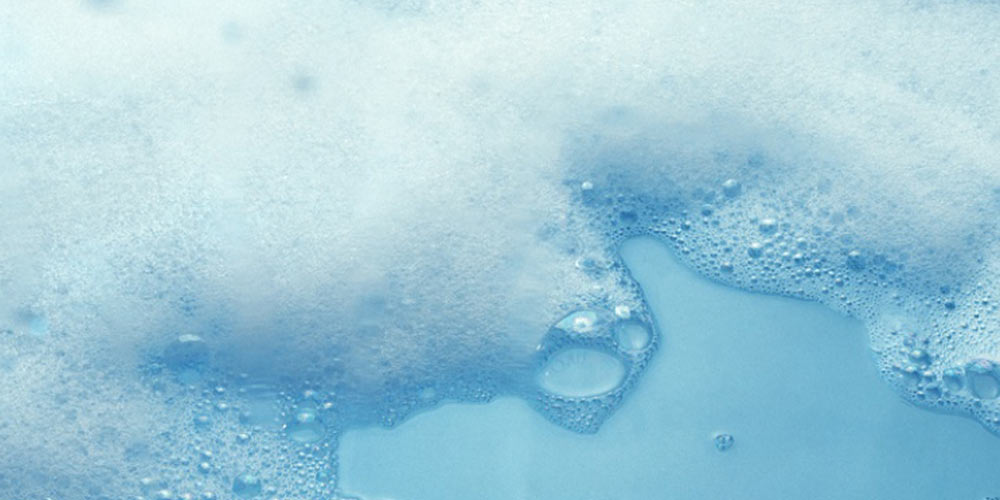Discover the Environmental Impact of Defoamers in Industrial Applications
Wiki Article
Choosing the Right Defoamer for Your Details Application Requirements
Picking the ideal defoamer for certain application requirements is a nuanced procedure that demands careful factor to consider of several variables, such as the foam medium, type, and operating conditions. Recognizing the subtleties of defoamer efficiency-- including speed and determination-- while additionally accounting for governing and environmental aspects is vital.Understanding Foam Development
Foam formation occurs when gas is caught within a fluid, creating a steady structure of bubbles. This phenomenon can substantially influence various commercial procedures, especially in fields such as food manufacturing, drugs, and wastewater treatment. The visibility of foam can impede blending, lower item high quality, and also result in operational ineffectiveness.Foam typically develops because of a mix of factors, consisting of surface-active representatives, frustration, and the characteristics of the liquid phase. Surfactants lower the surface tension of the fluid, assisting in the development of bubbles that can integrate and support. Frustration, whether from mechanical mixing or gas intro, improves bubble development, bring about boosted foam quantity.
Recognizing the technicians of foam development is vital for sectors intending to maximize their procedures. By determining the particular conditions that promote foam generation, organizations can apply strategies to reduce its impacts. This knowledge lays the foundation for selecting appropriate defoaming representatives that properly target the special obstacles presented by foam in different applications. A comprehensive understanding of foam development is essential for improving effectiveness and maintaining item honesty across numerous fields.
Kinds Of Defoamers Available
Numerous sorts of defoamers are readily available to resolve the obstacles positioned by foam in industrial applications. defoamers. Extensively categorized, defoamers drop into three categories: silicone-based, non-silicone-based, and natural defoamersSilicone-based defoamers are renowned for their efficiency and security across a vast array of temperatures and pH degrees. They are commonly made use of in applications where solid foam suppression is essential, such as in adhesives, finishings, and paints. Their reduced surface tension enables for rapid foam collapse.
Non-silicone-based defoamers, often made from organic substances, offer an alternative for applications delicate to silicone residues. These defoamers can be more separated into polyether and ester types, each tailored to satisfy details formulation requirements. Non-silicone defoamers are often made use of in food handling and personal treatment items as a result of their compatibility with various formulations.
Natural defoamers, originated from plant or animal resources, are getting traction because of their environmentally friendly profile. These items are especially appealing in applications where regulative conformity and sustainability are extremely important, such as in agrochemicals and biotechnology.
Picking the best kind of defoamer is vital for enhancing efficiency and making sure compatibility with certain applications.
Key Application Considerations
When choosing a defoamer, it is vital to think about the certain application demands to make certain ideal efficiency. defoamers. Different industries have distinct requirements, such as food handling, pharmaceuticals, or wastewater treatment, and each application might need special defoaming propertiesKey aspects to evaluate consist of the medium in which the defoamer will certainly be made use of, whether it is water-based, oil-based, or a mix thereof. The temperature and pH her response levels of the application can additionally significantly influence the performance of a defoamer. In addition, compatibility with other chemicals present in the system is crucial to prevent damaging responses that might jeopardize performance.
Another crucial consideration is the lathering behavior of the certain system. Comprehending whether the foam forms promptly or gradually can assist the selection of a defoamer that targets the origin cause effectively. The desired rate of defoaming can influence the option, as some applications need rapid activity while others might endure slower defoaming procedures.
Finally, regulative and ecological considerations ought to not be overlooked, especially in sectors with stringent conformity demands. Picking a defoamer that aligns with these elements ensures both performance and security in the application.

Performance Testing Techniques
Assessing the performance of a defoamer needs a systematic method to testing that properly measures its efficiency in specific applications. Numerous performance testing techniques can be employed to identify the ideal defoamer find more for a provided formulation.One common technique is the bubble test, which reviews the defoamer's capacity to reduce foam quantity over time. This test includes creating a steady foam and then adding the defoamer to observe the rate of foam collapse.

Ultimately, choosing the proper performance testing technique depends upon the particular application and the kind of foam being attended to. Each approach provides beneficial data that can direct solution modifications and improve the performance of the defoamer in functional applications.
Finest Practices for Selection


Following, think about the defoamer's efficiency in terms of rate of activity and persistence. A quick-acting defoamer may be necessary for procedures where rapid foam reductions is essential, while a much more persistent solution might be required for long term foam control. Furthermore, evaluate the ecological effect of the defoamer, including its biodegradability and any governing conformity needs.
Conduct trials with selected defoamers to identify their performance in real-world conditions. By sticking to these ideal methods, you can boost foam control efficiency and ensure the durability of your processes.
Conclusion
In recap, selecting the suitable defoamer demands a comprehensive examination of different aspects, consisting of foam type, medium, operating conditions, and environmental considerations. Comprehending the unique qualities of foam formation and the offered defoamer alternatives is essential.Choosing the proper defoamer for certain application requirements is a nuanced process that requires cautious consideration of numerous factors, such as the foam operating, tool, and kind problems.Choosing the right defoamer is crucial for achieving optimal efficiency in foam control applications. A quick-acting defoamer might be essential for procedures where quick foam reductions is important, while a more consistent formula might be needed for extended foam control.In recap, choosing the suitable defoamer necessitates an extensive assessment of various factors, consisting of foam type, medium, operating conditions, and ecological considerations. Comprehending the distinct qualities of foam development and the offered defoamer options is vital.
Report this wiki page